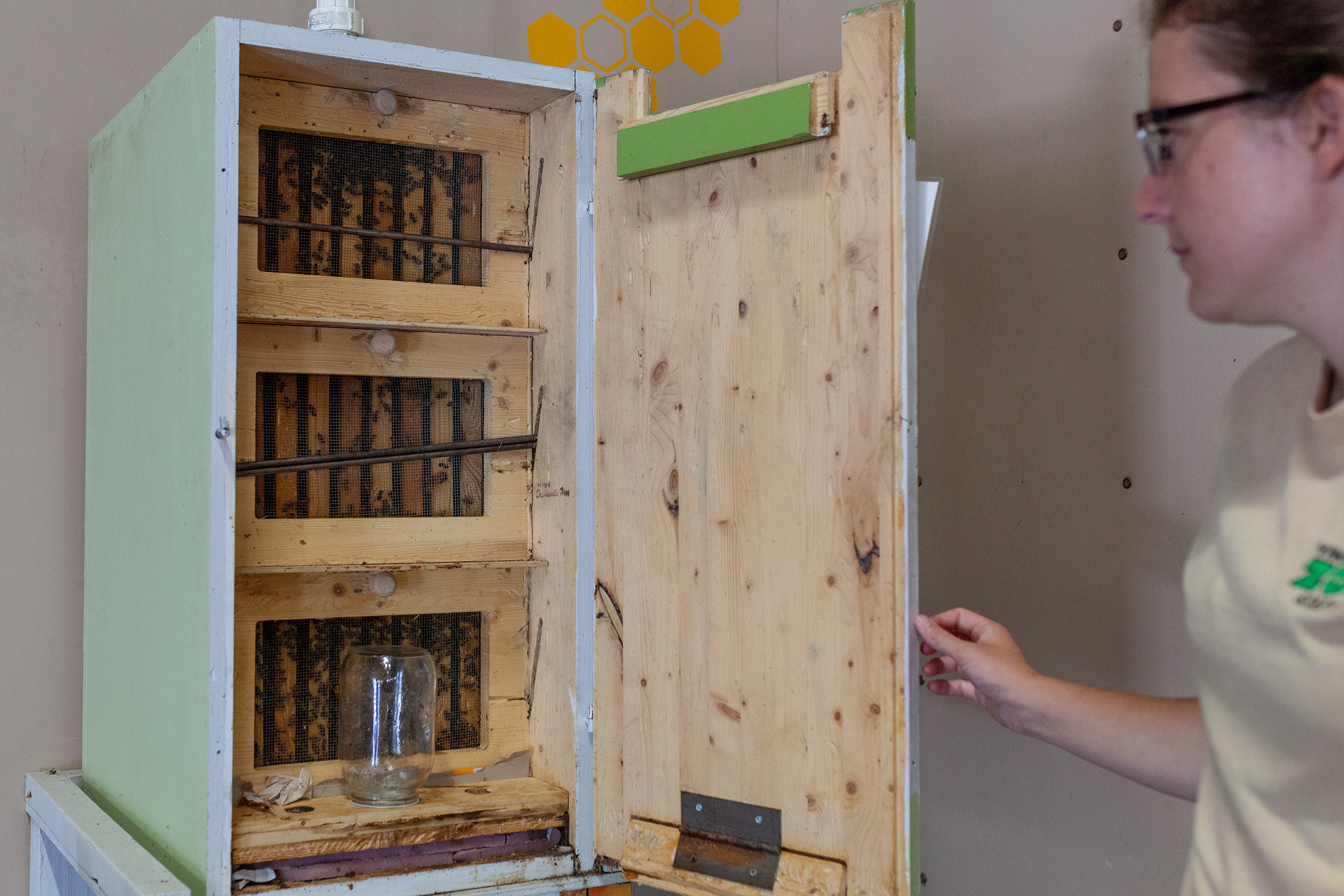Summary of What the Buzz at the Virginia Zoo?:
This content discusses the importance of bees and other pollinators, particularly honey bees, and how they contribute to food production and security. It emphasizes the need to protect and conserve these pollinators and provides information on how to do so. The content also highlights the Virginia Zoo’s efforts in educating visitors about honey bees and their role in pollination through observation hives and pollinator garden areas. It offers tips for creating pollinator-friendly habitats at home, such as reducing pesticide use, planting native plants, and providing bee houses. Additionally, it advises handling bee swarms without causing harm and suggests contacting the Tidewater Beekeepers Association for assistance.
Summary:
1. Bees and other pollinators are crucial for the United States rop growth and food security
2. The Virginia Zoo has honey bee hives and pollinator gardens for visitors to learn and engage with.
3. Home conservation efforts, such as reducing pesticide use and creating bee houses, can help protect pollinators.
What is the Buzz at the Virginia Zoo?
Have you ever witnessed a swarm of bees and felt the urge to spray them with insecticide? Well, hold off on that thought! In honor of National Honey Bee Day on August 19, it’s the perfect opportunity to understand why bees and other pollinators are vital and discover how you can contribute to their conservation efforts.
Did you know that honey bees alone contribute to pollinating more than $15 billion worth of crops in the United States every year, according to the United States Department of Agriculture? These tiny creatures play a critical role in the growth and success of crops, particularly when it comes to fruits, nuts, and vegetables. The Bee Conservancy highlights that they directly impact food security in the country.
What’s fascinating is that honey bees are non-native species. They were brought to North America from Eurasia and Africa by humans. While honey bees are important, it’s equally crucial to highlight the significance of other species of bees and pollinators in food production within the United States. These diverse pollinators deserve our attention and protection as well.
When you visit the Virginia Zoo, you can explore the world of honey bees and pollinators by exploring their Zoo Farm. There, you’ll find active honey bee hives that provide educational insights. One hive, known as the observation hive, allows visitors to observe the behavior of bees without the extraction of honey. Additionally, the Zoo has introduced a new Slovenian AZ hive, specially designed for indoor beekeeping and promoting warmth generation among the bees. The bees in this hive can access a portal to fly outside, pollinate plants in the Zoo’s gardens, and return to make honey. It’s a fascinating display of their activities and an excellent opportunity to learn about honey production, swarm encounters, and how to protect their threatened population.
After observing the hardworking honey bees, take the time to explore the Zoo’s various pollinator garden areas. With guidance from the SAFE Monarch program, a framework developed by the National Association of Zoos & Aquariums to protect Monarch butterflies, the Zoo has established new garden spaces. You’ll find an extension of the pollinator garden near the Trail of the Tiger, a Gingko garden near the emu exhibit, a bee garden at Flora Point, and soon-to-be-added gardens near the Turtle Oasis exhibit. These areas not only attract native pollinators but also offer support and sustenance to ensure their survival.
To enhance your understanding of pollinators and the diversity of plants in the gardens, you can attend educator plant chats held every Tuesday at noon in August. Engage in dialogue, exchange knowledge, and discover more about these incredible creatures and the plants they rely on.
However, the conservation of pollinator species extends beyond the walls of a zoo. It starts with creating healthy habitats in our communities. Responsible consumerism, reducing pesticide usage, and conducting proper research before planting or using chemicals are crucial. By purchasing plants native to your area, you limit the presence of pest-attracting fungus and reduce the need for pest control, ultimately benefiting the overall health of your garden.
While all non-organic pesticides can harm pollinators, neonicotinoid pesticides have a particularly detrimental impact on bee populations. These chemicals are highly toxic to many invertebrates, including bees, even in small quantities. Neonicotinoids can be absorbed by the plants they are used on, posing a potential danger to pollinators that feed on them. So, it’s best to implement practices that deter pests without affecting pollinators. For example, attracting birds with birdhouses or leaving wasps undisturbed can help control pests, as birds and wasps feed on them. Regular pruning of plants also reduces overcrowding, which can lead to fungus growth.
To foster a bee-friendly environment in your garden, consider creating bee houses. Like birdhouses, beehouses provide shelter and nesting opportunities for different bee species. However, conducting thorough research before establishing a bee house is essential as each species has specific requirements.
Lastly, if you come across a bee swarm, don’t panic or attempt to spray it. Bees are unlikely to sting unless they feel their honeycomb is being disturbed. When bees swarm, they are merely searching for a new home. It’s best to call the Tidewater Beekeepers Association Swarm Hotline at 757-285-4509 in such situations. They will safely relocate the swarm without causing harm.
So, whether you visit the Virginia Zoo or take action at home, remember the vital role tees and other pollinators play in our ecosystem. By learning, engaging, and implementing conservation practices, we can all contribute to the well-being of these fascinating creatures and protect our environment for future generations.


